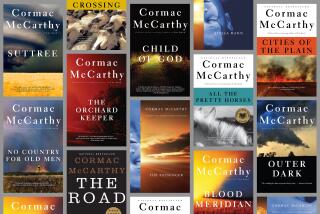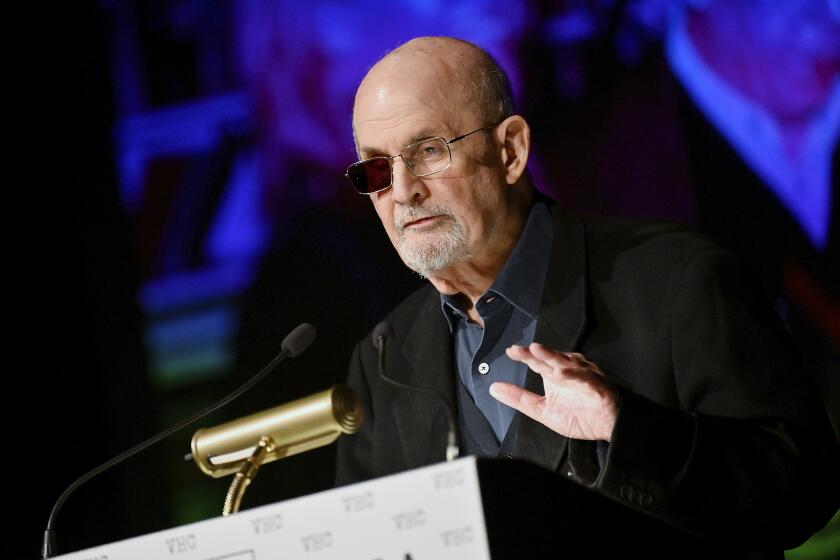Arm in arm with Bob Dylan
NEW YORK -- It was one of the most iconic record album covers ever released, and Suze Rotolo was part of it: On a snowy day in 1963, she snuggled with Bob Dylan as the two walked down a Greenwich Village street. “The Freewheelin’ Bob Dylan” went on to become one of his best-known records, but the long-haired girl on his arm was always a mystery.
Now, Rotolo has broken years of silence to tell the story of what it was like to fall in love with Bob Dylan at 17, to introduce him to civil rights politics and modern poetry, and to finally break up with him when the pressures of his stardom became too great. Her new book, “A Freewheelin’ Time: A Memoir of Greenwich Village in the Sixties,” offers a revealing glimpse of the young artist, whom she calls with understatement “an elephant in the room of my life.”
“People will always identify Suze as the girl on the album cover, and she’s lived with this since 1963, but that’s not the reason to read her book,” said Sean Wilentz, a Princeton University professor and historian in residence at Dylan’s official website. “She evokes a time and place out of which a good deal of contemporary American culture sprang. It was a time of great freedom, when people were figuring out what they want to be, but freedom is scary.”
During their turbulent, four-year relationship, Rotolo deeply loved Dylan, who was 20 when they met. She was there when classic songs like “Blowin’ in the Wind” and “A Hard Rain’s A-Gonna Fall” were new. She looked on with pride, then fear, as celebrity transformed him and other women pursued him. The author finally decided it was time for her to leave and become her own person. But not before an abortion and emotional breakdown shattered her.
“We loved each other very much and when it ended it was mutual heartbreak,” she writes in her memoir. “He avoided responsibility. I didn’t make it easy for him, either. . . . I knew I was not suited for his life.”
“What I really like is that she doesn’t go off on an ego trip or point fingers,” said Izzy Young, a paterfamilias of the early Greenwich Village folk scene. “Most of the accounts of this time are by guys talking about their career. Suze’s book talks about feelings and emotions.”
Emotions of the times
Among the hundreds of books about Dylan and his career, Rotolo’s memoir ranks as big news. But if devotees are expecting yet another portrait of genius, they’ll be disappointed. “A Freewheelin’ Time” is one of the first histories of the folk music years written from a woman’s perspective, and it goes beyond gossip to ask a pointed question: How did it feel? Rotolo writes that the era mattered because “we all had something to say, not something to sell.”
Their love affair blossomed in the hothouse of Greenwich Village, where a folk music revival spurred on the civil rights movement and led to the birth of modern rock culture. On any given night, tiny basement clubs were packed with talent including Dylan, Tom Paxton, Phil Ochs, Peter, Paul & Mary, Eric Andersen, Ian & Sylvia, Dave Van Ronk and Judy Collins, plus such rising young comedians as Woody Allen and Bill Cosby.
Rotolo recalls this era with dazzling anecdotes. But unlike most of the artists who traipse through her pages, she hasn’t abandoned the neighborhood. The author, now a 64-year-old artist, still lives there with her husband, a film editor, only a few blocks from the grungy walk-up she once shared with Dylan and the street where the “Freewheelin’ ” cover was shot.
Given her history and long silence, few would have been surprised if she wrote a tart, tell-all memoir. Yet Rotolo is generous: “He was funny, engaging, intense, and he was persistent,” she writes, describing her initial impressions of Dylan, whom she ran into at a folk music festival in 1961. “These words completely describe who he was throughout the time we were together; only the order of the words would shift depending on the mood or circumstance.”
The Dylan she knew could withdraw emotionally on a moment’s notice or crack up friends with outrageous humor. He’d scribble lyrics to new songs on napkins in cheesy diners. Like a sponge, he absorbed new influences, sometimes not sure if he’d written a song or borrowed it from someone else. Without warning he could be cruel, affectionate or deeply enigmatic.
He also became a hugely influential figure in the Village, and Rotolo was along for the ride. Dylan’s celebrity “made it harder for her to walk around for a few years because of that album cover,” said John Sebastian, an acquaintance who went on to form the Lovin’ Spoonful. “He looked like the ramblin’ guy, and she was the perfect girl. Suddenly you were looking for a rumpled leather jacket just like his, and girls were wearing those high boots.”
Dylan had blown into town from the Midwest, telling tall tales of how he’d run away from home to join a carnival. But Rotolo’s past didn’t need embellishment. She was a red diaper baby whose parents were communists. Steeped in left-wing politics, she got involved with the burgeoning civil rights movement and eventually traveled to Cuba in 1964, defying the State Department. A culturally sophisticated person, she read modern poetry, studied art and drawing, and immersed herself in Bertolt Brecht and other avant-garde playwrights.
When they became a couple, Rotolo introduced Dylan to these worlds. Close friends noticed the change: “You could see the influence she had on him,” said Sylvia Tyson of Ian & Sylvia. “This is a girl who was marching to integrate local schools when she was 15.”
‘Her own person’
She was unwilling, however, to be the seventh string on Dylan’s guitar.
Although some have idealized the folk era, Rotolo was rebelling against pervasive male chauvinism in the Village before she even had the words to describe it: “I am private by nature, and my instinct was to protect my privacy, and consequently his,” she writes. Yet this proved impossible, as Dylan’s star soared. “We got on really well, though neither one of us had any skin growing over our nerve endings. We were both over sensitive and needed shelter from the storm.”
Her reference to one of Dylan’s most famous songs is no accident. Elsewhere, she recalls “roosters crowing at the break of dawn” in the South Village; when the big breakup finally came, “he saw right from his side, and I saw right from mine.” Some rock historians believe Rotolo inspired a flock of Dylan tunes, including “Don’t Think Twice, It’s All Right” and “Tomorrow Is a Long Time.” “”I can only imagine what it must have been like to stand in her shoes,” said blues singer Maria Muldaur, who lived in the Village in this period. “Suze was her own person, who loved this guy very much. Suddenly people were stepping over her, pushing her aside to talk to him. “It must have been an overwhelming experience.”
But will it connect with younger readers today, who have only dim recollections -- if any -- of the Great Folk Scare? Although aging boomers who read the book may be sorely tempted to pull out their old Phil Ochs recordings, others may simply scratch their heads.
Today the neighborhood looks different. Hordes of tourists jam the sidewalks at night and skyrocketing real estate prices drove out the last starving artists long ago. But the idea of what the place once meant, and the continuing need for it, may still be alive.
“As I read the book, I wondered, ‘Gee, if my granddaughter picked it up, would it speak to her?’ ” asked John Cohen, a friend of Rotolo’s who formed the New Lost City Ramblers. “I think it would, because she’d ask herself: Is there a Greenwich Village somewhere for me?”
--
More to Read
Sign up for our Book Club newsletter
Get the latest news, events and more from the Los Angeles Times Book Club, and help us get L.A. reading and talking.
You may occasionally receive promotional content from the Los Angeles Times.






